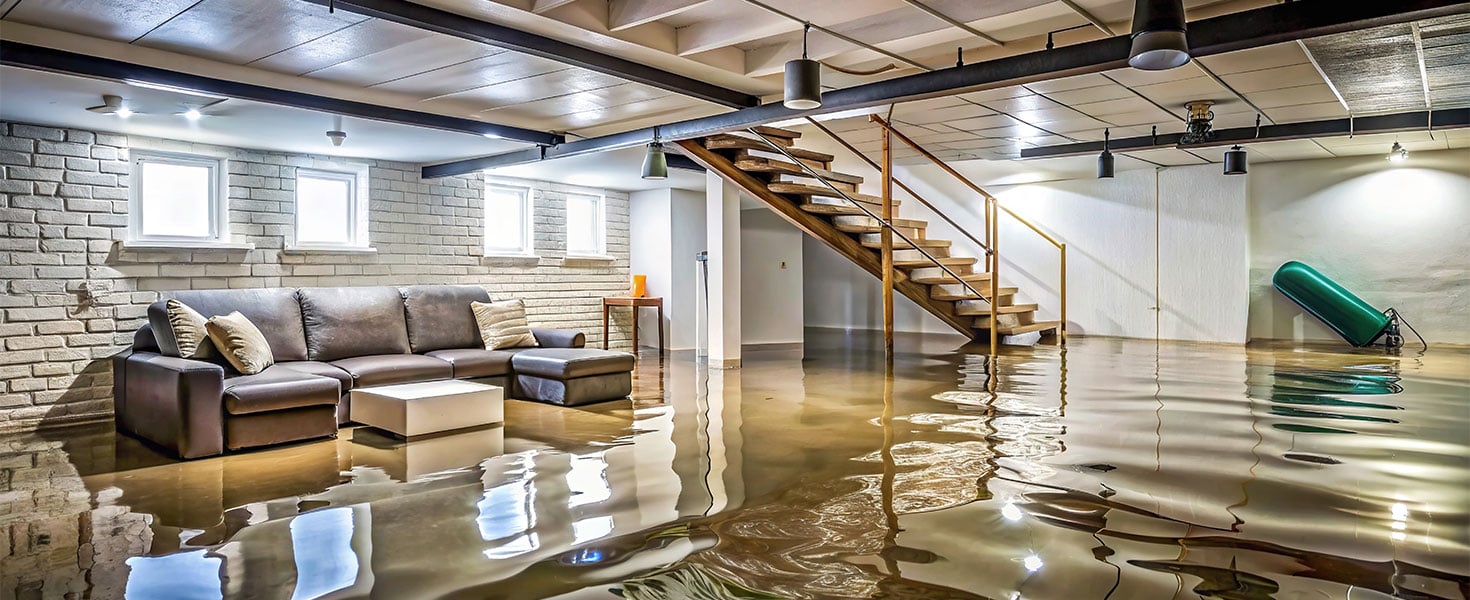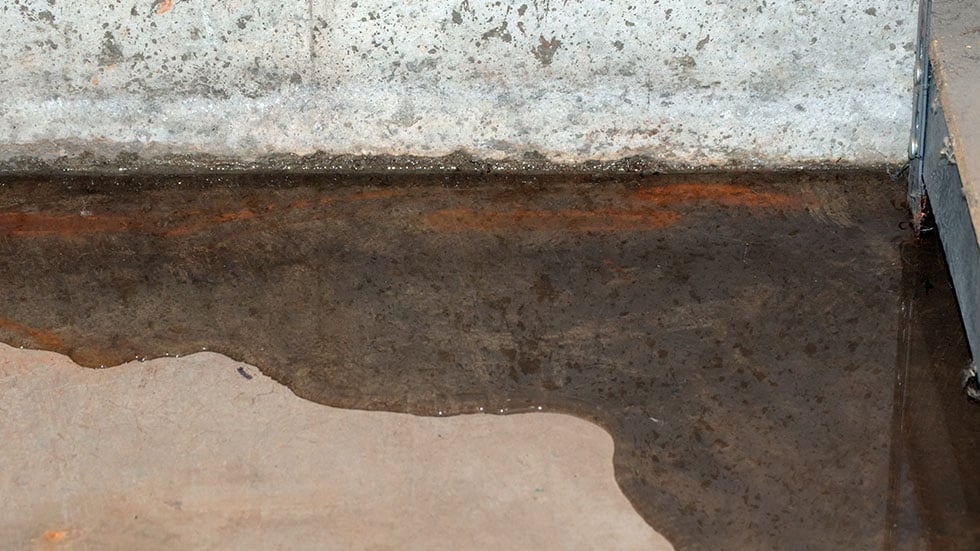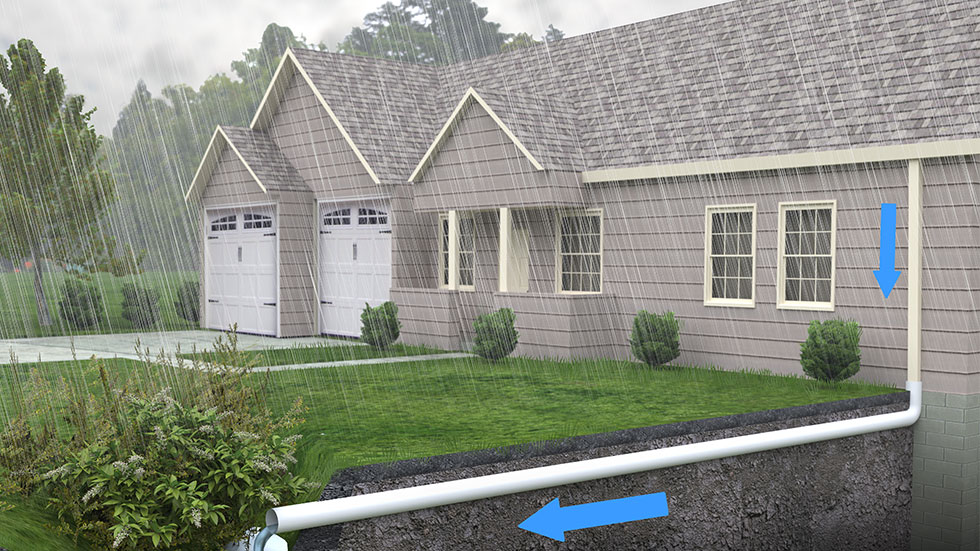How to Prevent Water Damage from a Flooded Basement
Identify the causes of a wet basement, learn what to do, and how a sump pump can help prevent future flooding


Water in the basement can be frustrating and stressful, especially if you use your basement for storage or it’s a finished living area. While there can be various causes of a wet basement, knowing how to clean up water damage and prevent it in the future can be helpful. Read on to learn more.

Why is your basement flooding?
There are three primary water issues you may see in your basement:
Water coming up through concrete floor / where wall meets the floor: In this case, the likely source of the water is subsurface groundwater. This flooding can happen when rising groundwater and saturation during wet weather causes pressure, which pushes against the foundation and forces water through cracks and openings in the concrete.
Water near foundation exterior / water stains on foundation wall: If the water seems to be concentrated near the exterior foundation walls, the problem is likely water that isn’t draining away from your home properly. This can be caused by leaky basement windows, clogged window wells, overflowing gutters, short downspouts, settled pavement, roof leaks, or poor landscape slope away from your home.
Flooded basement: Basement flooding, especially during wet weather, is common and can be caused by various things. First, your sump pump may not be able to keep up with increased water, or it may fail due to a mechanical issue. Damaged or burst pipes, cracked hoses, or a failed hot water tank can flood, as can exterior drainage system problems like clogging. Storm sewer backup can also back up into your basement.

What to do with a wet basement
If you walk down to your basement and find water, whether a little or a lot, here are a few steps you can take right away to help prevent further damage:
1. Check that it's safe
If necessary, disconnect the power to the basement. Contact an electrician for help if you need it. If you must go down into your wet or flooded basement, wear rubber boots and try to stay as dry as possible. Avoid touching any electrical wires or devices.
2. Determine the water source
Is this a one-time issue due to clogged gutters? Or a consistent problem because of a crack in the foundation? Is there water forming along the walls or a window, or have you received an excessive amount of rain recently? Could there be a plumbing leak? (If so, consider calling a plumber for help.)
Be sure to check walls, windows, floor cracks, pipes or hoses connected to appliances, floor drains, toilets, sinks, tubs and showers for damage or leaks.
3. Pump out standing water
If there’s a lot of water in the basement, you can suck up standing water with a wet-dry vacuum. Otherwise, you may need to call a plumber or specialist to pump the water out.
4. Remove items that could attract mold
Paper, fabric, wood, and leather will attract mold if they remain wet, so dry out and save what you can and throw away the rest. If you have wood-framed walls or gypsum board with water damage, these may be able to be replaced by a basement specialist or contractor.
5. Dry the area
After removing standing water, run a dehumidifier and fans to help dry the area. If you have a basement window you can open (without the chance of letting more water in), that can help with dampness and smell.
6. Attend to carpet
If you have carpet, suck up as much water as possible, then pull up the carpet from the tacking strip and tent it over chairs and ladders. You may also need to pull up the padding, which likely won’t be recoverable and will need thrown away.
7. Attend to wooden floors
If you have a wood floor, use a wood floor-friendly disinfectant to clean the area after the water has been removed. Note that it can take weeks for your floor to dry out completely, so wait before having it sanded or refinished.8. Consider contracting your insurance agent
If there’s considerable damage to your home and/or renovations and repairs will cost a lot, consider contacting your insurance agent to learn if anything may be covered by your home insurance. Home insurance doesn’t cover all types of water damage or restoration, but it doesn’t hurt to ask.

How to prevent water in the basement
While it’s not always completely avoidable, there are a few preventive actions you can take to avoid water problems in your basement.
For example, start by installing or replacing your sump pump. Also consider replacing old water heaters, washing machine supply hoses, and other water supply and drain lines if they show signs of leaking or wear.
Next, check make sure your gutters are clean and clear of debris and add downspout extensions so gutters drain further away from your foundation. You can also add an interior or exterior drainage system, which can help lead water away from your home. Additionally, consider cleaning and possibly replacing window wells or basement windows, and repair any foundation cracks. A foundation repair expert can inspect the cracks and determine the cause and whether anything needs repaired.
